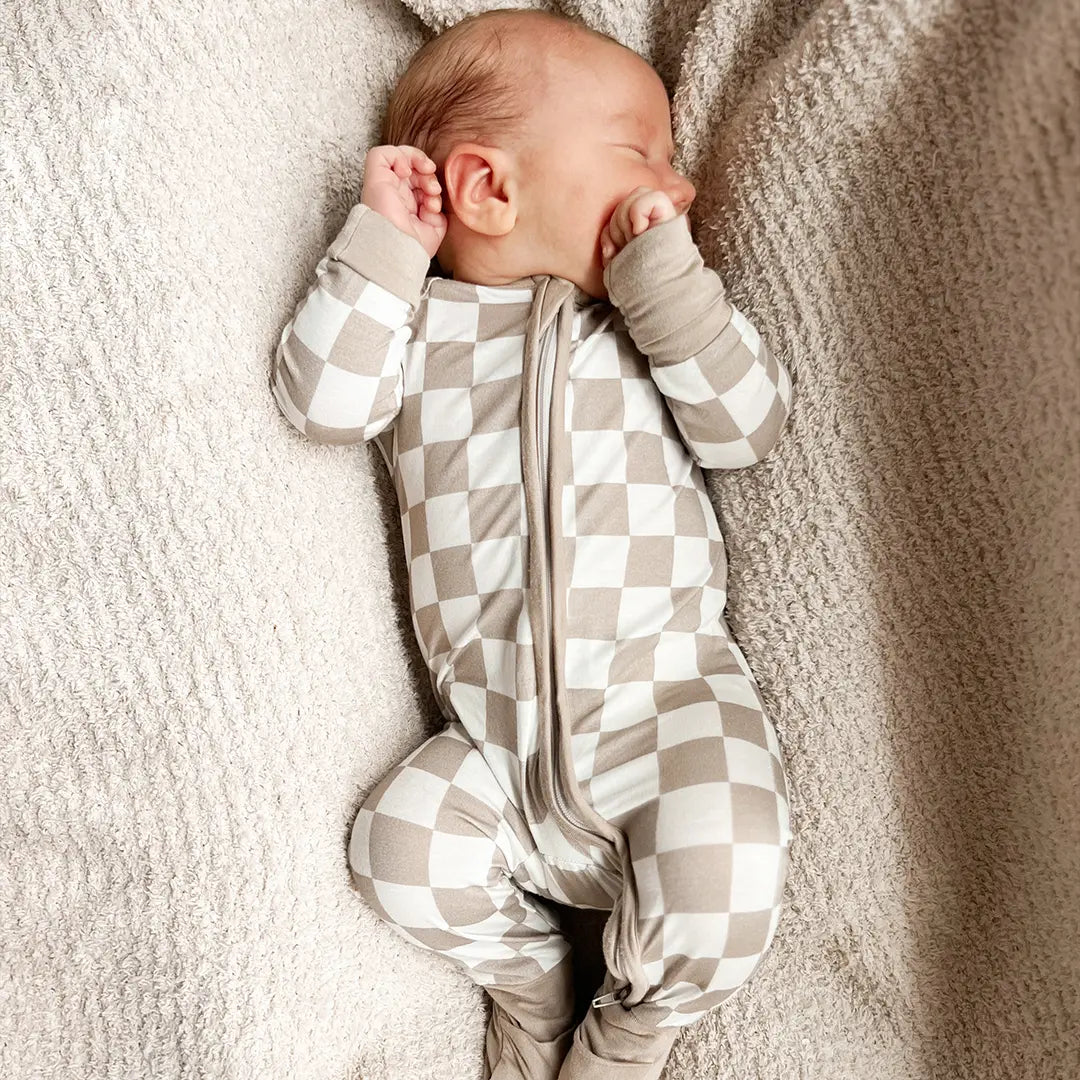
When Do Babies Stop Wearing Romper?
Partager
When you think of baby clothing, you immediately think of rompers. There’s a reason why rompers are the clothing category that dominates a baby’s wardrobe for at least the first year of life. Not only do they provide a super convenient complete outfit, but their design also simplifies diaper changes. As your baby grows and you continue to move up in size, you’ll find that most brands only offer rompers from newborn to 24 months old. So, here’s the question: When does a baby stop wearing a romper? Like all good things, the romper era eventually comes to an end, and this usually happens between 12-24 months.
Why Do Babies Stop Wearing Rompers?
They Start Walking
Once your baby starts walking, they’ll be constantly on the move, making rompers less practical for active toddlers. They love their new independence, but they don't obey when it comes to diaper or clothing changes. While you might be able to get them into a short-sleeve romper while they’re standing and trying to get out, getting them into a long-sleeved romper can be nearly impossible. It’s much easier to put on a shirt and pants for an upright toddler, and it’s also a wonderful opportunity to slowly teach them to dress themselves. Another reason to stop wearing a romper once your baby starts walking is that rompers with feet can easily slip. But our rompers have anti-slip soles.
They’re in the nursery
While there’s no need to throw out your romper just because your baby is in the nursery, wearing two-pieces makes it easier for the nursery staff to spot a dirty diaper. Instead of sniffing the diaper, they can just unzip the waistband to tell if your baby needs a change. If your baby is close to toddlerhood, they may even hide when they have a bowel movement, making it harder to spot that their diaper is dirty.

They’re potty training
One of the biggest reasons to stop wearing a romper is that your little one is about to start this important milestone: potty training. The early days of potty training can be messy. You’ll need to have a potty ready at all times, carrying it from room to room and even in the car. Since your child may not actively say they want to go to the toilet, you’ll first notice signs that they’ve started straining, and you’ll want to get them undressed and on the potty as soon as possible. The right clothes are all about convenience, and it’s much quicker and easier to take off a pair of pants than it is to undo snaps and pull apart hanging fabric. If your little one accidentally wets their pants (which they inevitably will), it’s much easier to change the dirty pants than to take off the romper—which can make a mess. Plus, as your child becomes more independent during the potty training process, you’ll want to encourage them to take off their pants and go to the potty on their own, especially when you’re getting them ready for kindergarten.
You Want More Style Options
Not only will it be harder to find the right romper size past 24 months, but as your baby grows, their dressing style will change. Rompers are a must for your baby’s first year of life because they are convenient and comfortable for babies who only lie down or crawl (shirts tend to ride up and pants tend to fall down). Once your baby reaches the toddler stage, you may start to give up baby clothes and switch to older kid clothes, such as jeans, dresses, suspenders, etc. While there are many reasons to choose to stop wearing a romper for your baby, it ultimately comes down to personal preference. Some parents will switch after their baby’s first birthday, while others wait until closer to their second birthday for comfort, convenience, or habit. Whether to give up a romper is a personal decision, so make the switch when it feels right and you're ready!
So, what are some alternatives when you decide to stop dressing your child in a romper?
Best Romper Alternatives
1. Two-piece: Consider a shirt with a collar and pants with a waistline. These options facilitate the dressing process while also accommodating your baby’s growth.
2. Dresses and tunics: For girls, dresses and tunics offer plenty of room for movement.
3. Jumpsuits: If you like the simplicity of a jumpsuit, it's a great option. They have many advantages. They are easier to put on and take off.
4. Choose organic fabrics: Regardless of what type of clothing, choose organic fabrics, such as bamboo, to ensure your child is comfortable and safe.
Now that you know when to transition out of rompers, let’s explore some great alternatives.

Practical tips for parents
1. Consider the season: remember that the season will significantly affect your choice of baby clothing. Layering is essential in the first few months, and as the weather warms up, lightweight fabrics are vital.
2. Choose a larger size: babies grow quickly. It is important to choose the right size to ensure use and enhance comfort.
3. Pay attention to the tips: if your child seems uncomfortable or restricted in a jumpsuit, it may be time to change the clothing.
While rompers offer convenience and comfort until a child is about a year old, the transition to more flexible clothing usually occurs between 12 and 24 months. This transition doesn’t just represent a milestone in your child’s fashion journey. It’s also closely tied to their physical and emotional development.
Whether you’re a new mom or dad or an experienced parent, keeping up with your child’s progress as they grow is both exciting and challenging. Don’t worry; Miozing makes the parenting journey easier. For tips and must-have baby products, feel free to continue browsing our website.
Thank you for visiting. We wish you all the best in your parenting adventure!
